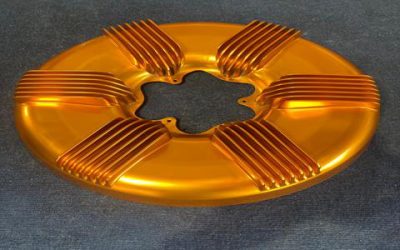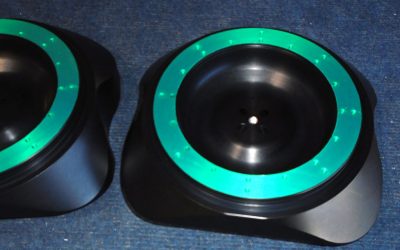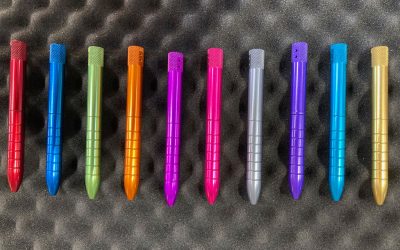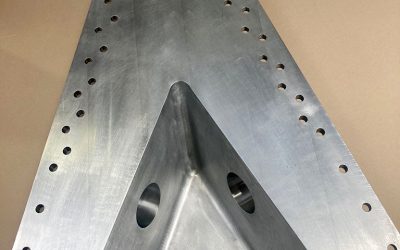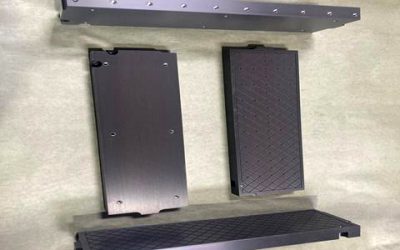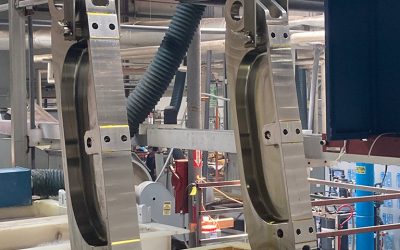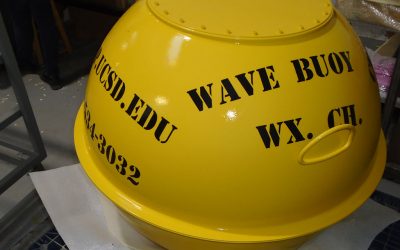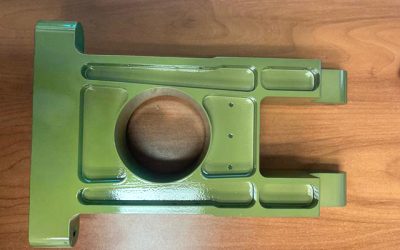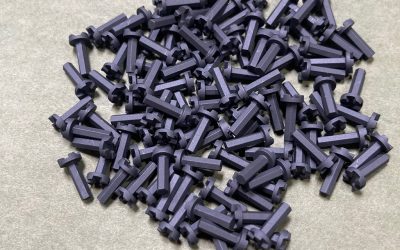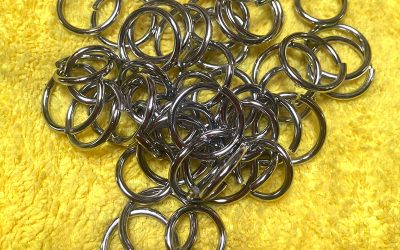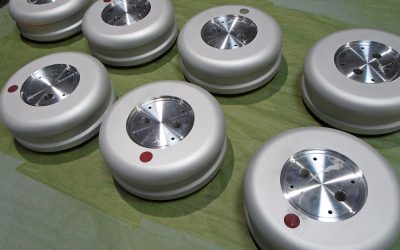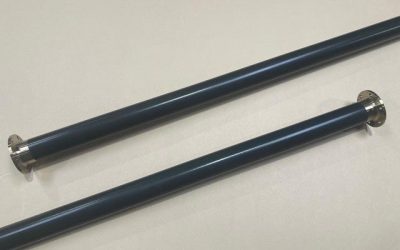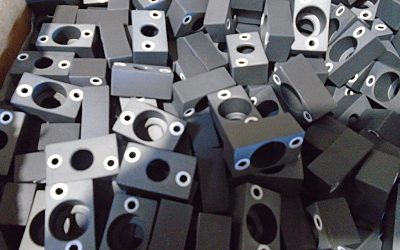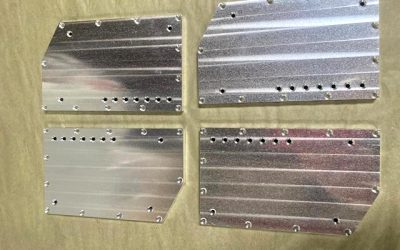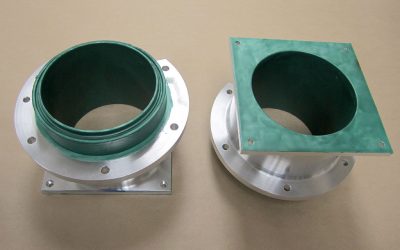Services
Miramar Metal Processing (MMP) offers a full range of superior metal finishing services.
We work consultatively with our clients and share our expertise from the design stage, offering guidance and assistance with respect to application, operating environments and desired performance properties of any component or part. We have the expertise and are committed to finishing any component or part to our clients’ most stringent specifications.
Our top quality, proprietary specialty finishes, include:
- Anodizing (Type II and Type III (hard-coat)
- Color Anodizing
- Bright Dip Anodizing
- Passivation
- Chem Film
- Glass Bead Blasting
- Teflon coating
- Liquid Paint
- Powder Coating
- Dry Film Lubricants
- Symcoat HCT
- Symcoat HT500
- TCP-HF
- Masking
Anodizing
Miramar Metal Processing has both a regular anodizing line as well as an automated line.
Our Manual Line is the workhorse of our company and is where we process first-articles, develop new processes and run production on a daily basis.
Our Automatic Line is a fully automatic, PLC driven line which is used for production runs and heavy parts which might be too heavy to handle manually. The automatic line is also used when the consistency of the product finish is critical. The PLC allows us to program each process to produce consistent finishes run after run.
Both lines are capable of processing Type II, Type III and Chemfilm.
AC-130-2 Surface Pre-Treatment
AC-130-2 surface pre-treatment delivers equivalent performance to PAA — in less time. The water-based sol-gel system will enhance adhesion between aluminum alloys, steel, titanium and composites and help reduce overall operating costs.
EW-5000 Structural Adhesive Primer
M™ Scotch-Weld™ Structural Adhesive Primer EW-5000 meets multiple customer specs in the aerospace industry. It dries evenly in ambient temperatures and can be handled prior to the bake cycle, which improves shop handling over competitive solvent-based systems.
Anodize Type II
Aluminum Anodize Type II is an electrolytic process that transforms the surface of aluminum into an aluminum oxide coating. The product becomes more durable, improving corrosion and abrasion resistance. Due to the porous nature of the oxide coating, the material now becomes a blank canvas where it is possible to dye it in a variety of different colors, or it may also be silkscreened and imprinted with graphics, as required.
Anodize Type III
Anodize Type III (hard coat) is an electro-chemical process that transforms the surface of the metal into an aluminum oxide coating. Amongst the benefits of Type III Anodizing is superb abrasion and wear resistance, and excellent dielectric properties.
Bright Dip Anodizing
Bright Dip or Chemical Polishing is a pre-treatment used to enhance the sheen of aluminum. Anodizing the product after bright dipping will protect the metal against corrosion and preserve the luster of the metal.
Phosphoric Acid Anodizing (PAA)
Also known as the Boeing process, PAA is recognized as an excellent preparation for adhesive bonding in the aerospace industry. The oxide film formed during the anodizing process has greater durability under adverse conditions than films formed in chromic acid...
Sulfuric Acid Anodizing Type IIB
Type IIB is a thin sulfuric acid anodizing, for use as a non-chromate alternative for Type I and Type IB coatings, where corrosion resistance, paint adhesion and fatigue resistance is required. Request Quote
PTFE Impregnated Anodizing
PTFE impregnated anodizing meets the requirements of MIL-A-63576 and AMS 2482. During the process, an aluminum oxide coating is impregnated with PTFE to increase the wear and corrosion resistance, hardness and lubricity of anodized aluminum. It transforms the surface...
Passivation
Passivation is an immersion process where the free iron is chemically removed from the surface of stainless steel or various other alloys. The removal of superficial iron is performed by chemical dissolution. It removes the surface contaminant without affecting the stainless steel.
Paint, Primers & Adhesive Primers
With a renewed and upgraded paint shop, we have three paint booths and two ovens and are well equipped to handle a variety of regular and special needs for either liquid paint or powder.
BR-127 Adhesive Bond Primer
The Primer BR® 127 is a modified epoxy primer. It is the industry standard for high-performance corrosion primers and has been used in virtually every commercial aircraft built since its introduction. This material can be used with essentially all 250°F (121°C) film...
Chem Film (Conversion Coating)
Chemical film coating, also referred to as Chem Film applies a chromate conversion coating on aluminum, producing a finish which protects from corrosion, conducts electricity and allows for good paint adhesion.
Dry Film
A Dry Film lubricant is used to prevent galling and seizure of metals. It is a modified paint where the pigment has been substituted or exchanged for a powdered lubricant such as graphite or moly disulfide.
Electropolishing
Electropolishing is an electrochemical process that removes material from a metallic workpiece, reducing the surface roughness by leveling micro-peaks and valleys, improving the surface finish. It is used to polish, passivate, and deburr metal parts and may be used in lieu of abrasive fine polishing.
FPL Etching
FPL Etching was developed by Forest Products Laboratory, hence the commonly used name of FPL etch. FPL Etching provides increased bond durability. The etched aluminum surface consists of ‘whisker-like’ protrusions, which are important in ensuring bond strength and...
Glass Bead Blasting
As a key step in the preparation of parts for assembly, plating, anodizing, painting or coating, Glass Bead Blasting is a useful method of cleaning to remove all foreign matter from metal such as scale, corrosion, paint, carbon and epoxy etc., without chemical stripping.
Symcoat HT-500 (Proprietary Finish)
SYMCOAT HT500 is a proprietary process used for mold release applications. It can be applied to molds made from different metals including aluminum, steel and stainless steel. It is designed to withstand temperatures up to 750ºF intermittently or it can be used continuously at temperatures up to 500ºF.
Symcoat HCT (Proprietary Finish)
SYMCOAT HCT is a proprietary process which meets the requirements of MIL-A-63576. During the process, an aluminum oxide coating is impregnated with PTFE to increase the wear and corrosion resistance, hardness and lubricity of anodized aluminum. It transforms the surface of aluminum into a ceramic type of material, which cannot be scratched or nicked by ordinary means.
TCP-HF (Conversion Coating)
TCP-HF was developed and patented by the Department of Defense, US Navy. It is a trivalent chromate based coating aimed at replacing Hexavalent Chromates, and outperforms all other trivalent products tested.
Masking
Masking is employed in most any metal finishing operation where only a specifically defined area of the surface of a part must be exposed to a process. Conversely, masking may be employed on a surface where treatment is either not required or must be avoided.

